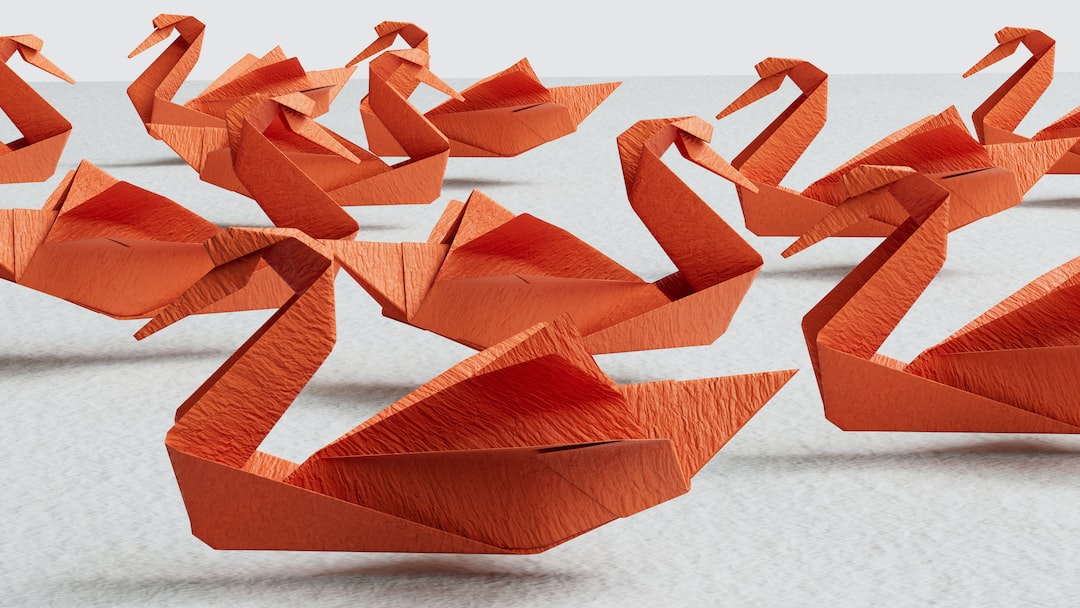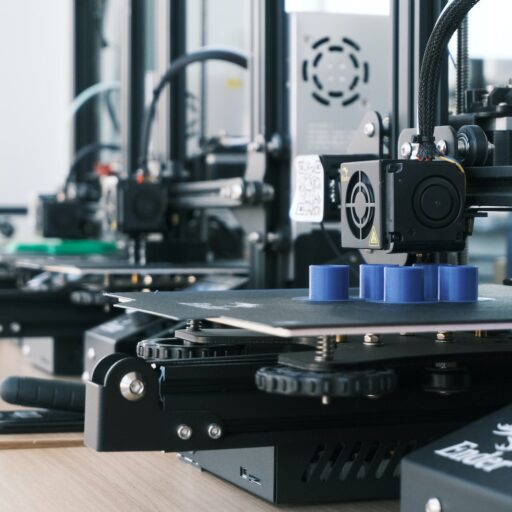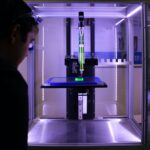Support our educational content for free when you purchase through links on our site. Learn more
3D Printing Profit Margin [2024]
Did you know that 3D printing is not only a fascinating technology but also a profitable business venture? If you’re interested in exploring the world of 3D printing and want to know more about the profit margins associated with it, you’ve come to the right place. In this article, we’ll delve into the intricacies of 3D printing profit margins, providing you with valuable insights and expert advice. So, let’s dive in and discover how you can make money with 3D printing!
Table of Contents
- Quick Answer
- Quick Tips and Facts
- Background
- What Determines the Cost of 3D Printing Services?
- How to Calculate the Cost of 3D Printing?
- Factors Affecting the Cost of Printing a Prototype
- Choosing the Right Type of Material
- Print Time: The Time is Money
- Size and Complexity: The Bigger, the Costlier?
- Post-Processing: Adding the Finishing Touch
- Maintenance Cost: Keeping Your Printer in Top Shape
- Profit Margin: Making Money with 3D Printing
- Advanced Parameters: Fine-Tuning Your Prints
- How Might Printing Costs be Reduced?
- FAQ
- Conclusion
- Recommended Links
- Reference Links
Quick Answer
The profit margin in 3D printing can vary depending on several factors, but typically ranges from 50% to 90% of the cost of materials. However, it’s important to consider additional costs such as labor, post-processing, and overhead expenses. By optimizing these factors and finding the right balance, you can maximize your profit margin in the 3D printing business.
CHECK PRICE on: Amazon | Walmart | eBay
Quick Tips and Facts
- 3D printing profit margins typically range from 50% to 90% of material costs.
- Additional costs such as labor, post-processing, and overhead expenses should be considered.
- Optimizing print time, material usage, and post-processing steps can help increase profit margins.
- Choosing the right type of material and understanding its cost implications is crucial.
- Regular maintenance of your 3D printer can help reduce unexpected costs and downtime.
Background

3D printing has revolutionized the manufacturing industry, enabling the creation of complex and customized objects with ease. From rapid prototyping to production-grade manufacturing, 3D printing offers a wide range of applications. However, understanding the cost and profit margins associated with 3D printing is essential for running a successful business.
What Determines the Cost of 3D Printing Services?
To estimate the cost of 3D printing services, several factors come into play. These factors include:
-
Material Type: The type of material used for 3D printing can significantly impact the cost. Common materials include thermoplastics, resins, and high-end materials like alloy steel, cobalt, titanium, aluminum, and nickel.
-
Print Time: The time taken to complete a 3D print is a fundamental variable that affects the cost. Businesses often charge a set amount per hour that the machine is in use.
-
Size and Complexity: The size and complexity of the model being printed can impact the final cost. Precise and detailed 3D printing for complex designs may increase the price.
-
Post-Processing: Additional steps such as polishing, electroplating, and coating with epoxy can add to the cost of 3D printing services.
-
Maintenance Cost: Regular maintenance of 3D printers is necessary to ensure optimal performance. Cleaning and replacing parts can incur additional costs.
How to Calculate the Cost of 3D Printing?
Calculating the cost of 3D printing involves considering various factors. Here’s a simple formula to estimate the cost:
Cost of 3D Printing = Material Cost + Labor Cost + Overhead Cost + Profit Margin
To calculate the material cost, you need to know the volume of the model being printed and the cost per unit volume of the material. Labor cost includes the time spent on preparing the model, setting up the printer, and post-processing. Overhead costs encompass expenses such as electricity, maintenance, and rent. Finally, the profit margin is the amount you aim to make from each print.
Factors Affecting the Cost of Printing a Prototype
When printing a prototype, several factors can influence the cost:
-
Material Type: The choice of material affects both the cost and the quality of the prototype.
-
Print Time: The longer it takes to print a prototype, the higher the cost.
-
Size and Complexity: Larger and more complex prototypes require more material and time, increasing the cost.
-
Post-Processing: Additional post-processing steps, such as sanding or painting, can add to the overall cost.
By considering these factors, you can estimate the cost of printing a prototype and determine an appropriate pricing strategy.
Choosing the Right Type of Material
Selecting the right material for your 3D prints is crucial for both quality and cost considerations. Different materials have varying costs and properties. Here are some popular materials used in 3D printing:
| Material | Cost (Approx.) | Properties |
|---|---|---|
| PLA | $20/kg | Biodegradable, easy to print, low strength |
| ABS | $25/kg | Durable, impact-resistant, moderate strength |
| PETG | $30/kg | Strong, flexible, chemical-resistant |
| Nylon | $50/kg | High strength, flexible, wear-resistant |
| Resin | $50/L | High detail, smooth surface finish |
| Carbon Fiber | $100/kg | High strength, lightweight, stiff |
Choosing the right material depends on the specific requirements of your project. Consider factors such as strength, flexibility, surface finish, and cost when making your selection.
Print Time: The Time is Money
Print time plays a significant role in the cost of 3D printing. The longer a print takes, the more it costs in terms of material usage, electricity, and labor. To optimize print time and reduce costs, consider the following tips:
- Layer Height: Increasing the layer height can reduce print time, but it may sacrifice surface quality.
- Infill Density: Lower infill density reduces print time and material usage, but it may compromise the strength of the print.
- Print Speed: Adjusting the print speed can impact the overall print time, but be cautious not to compromise print quality.
By finding the right balance between print time and quality, you can optimize your profit margins.
Size and Complexity: The Bigger, the Costlier?
The size and complexity of a 3D print can significantly impact the cost. Larger prints require more material and time, increasing the overall cost. Similarly, complex designs with intricate details may require additional support structures or post-processing steps, adding to the cost. When pricing your 3D printing services, consider the size and complexity of the prints to ensure a fair and profitable rate.
Post-Processing: Adding the Finishing Touch
Post-processing steps can enhance the quality and aesthetics of 3D prints but also add to the cost. Some common post-processing techniques include sanding, painting, polishing, and applying surface finishes. When offering post-processing services, consider the time, materials, and expertise required, and factor these costs into your pricing strategy.
Maintenance Cost: Keeping Your Printer in Top Shape
Regular maintenance of your 3D printer is essential to ensure optimal performance and reduce unexpected costs. Maintenance tasks may include cleaning, lubricating moving parts, and replacing worn-out components. While maintenance costs can vary depending on the printer type and usage, it’s important to factor them into your overall expenses to maintain a healthy profit margin.
Profit Margin: Making Money with 3D Printing
The profit margin in 3D printing can vary depending on several factors. As mentioned earlier, it typically ranges from 50% to 90% of the cost of materials. However, it’s important to consider additional costs such as labor, post-processing, and overhead expenses. By optimizing these factors and finding the right balance, you can maximize your profit margin in the 3D printing business.
Advanced Parameters: Fine-Tuning Your Prints
To further optimize your 3D prints and reduce costs, consider experimenting with advanced parameters. These parameters may vary depending on the printer and slicing software you use. Some common advanced parameters include:
- Layer Thickness: Adjusting the layer thickness can impact print time and surface quality.
- Print Temperature: Fine-tuning the print temperature can optimize print quality and reduce material usage.
- Infill Pattern: Choosing the right infill pattern can balance strength and material usage.
By exploring these advanced parameters and finding the optimal settings for your prints, you can achieve better efficiency and cost-effectiveness.
How Might Printing Costs be Reduced?
Reducing printing costs is a constant goal for 3D printing businesses. Here are some strategies to help you achieve cost savings:
- Material Optimization: Choose materials that strike a balance between cost and quality for your specific application.
- Process Selection: Select the most suitable 3D printing process for your project to minimize material waste and reduce print time.
- Infill Density: Adjust the infill density to optimize strength and material usage.
- Support Structures: Minimize the use of support structures to reduce material consumption and post-processing time.
- Print Batch: Print multiple objects simultaneously to maximize the use of printer time and reduce energy consumption.
By implementing these strategies, you can effectively reduce your printing costs and increase your profit margins.
FAQ

Is a 3D printing business profitable?
Yes, a 3D printing business can be profitable. However, it requires careful planning, understanding of costs, and finding the right niche or target market.
Read more about “Unveiling the Top 25 3D Printed Products Skyrocketing in Demand …”
How much money do you make with a 3D printer?
The amount of money you can make with a 3D printer depends on various factors such as the type of prints, pricing strategy, and market demand. Profit margins can range from modest to substantial, depending on your business model and efficiency.
Read more about “Best 3D Printer for Home Business …”
Is 3D printing a viable side hustle?
Yes, 3D printing can be a viable side hustle. With the right equipment, skills, and marketing strategy, you can generate additional income by offering 3D printing services or selling 3D printed products.
Read more about “Is 3D printing a viable side hustle?”
Is 3D printing passive income?
While 3D printing can generate income, it is not entirely passive. It requires active involvement in tasks such as managing orders, maintaining the printer, and providing customer support. However, with efficient systems in place, it can provide a relatively passive income stream.
Conclusion

In conclusion, 3D printing offers exciting opportunities for both hobbyists and entrepreneurs. Understanding the factors that affect the cost of 3D printing services and optimizing your profit margins is crucial for running a successful business. By considering factors such as material type, print time, size and complexity, post-processing, and maintenance costs, you can ensure a healthy profit margin. Remember to continuously explore ways to reduce costs and improve efficiency to stay competitive in the ever-evolving world of 3D printing.
If you’re interested in learning more about 3D printing, check out our other articles on Best 3D Printer™ for in-depth reviews, industry news, and tips on how to make the most of your 3D printing journey.
Recommended Links
- CHECK PRICE on: Amazon | Walmart | eBay
- Shop Best 3D Printers on Best 3D Printer™
- Shop 3D Printer Brands on Best 3D Printer™
- Learn about 3D Printers for Small Businesses on Best 3D Printer™
- Stay updated with 3D Printing Industry News on Best 3D Printer™
- Discover how to Make Money with a Printer on Best 3D Printer™



